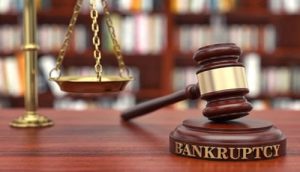 When a debtor is faced with mounting debt and cannot afford to pay their creditors, filing for Chapter 13 bankruptcy may be the best option. This form of bankruptcy allows a debtor to keep their assets while paying back their debts through a court-instructed payment plan over 3 or 5 years.
When a debtor is faced with mounting debt and cannot afford to pay their creditors, filing for Chapter 13 bankruptcy may be the best option. This form of bankruptcy allows a debtor to keep their assets while paying back their debts through a court-instructed payment plan over 3 or 5 years.
The best Phoenix bankruptcy attorney can help you navigate the ins and outs of filing for Chapter 13 and ensure that your bankruptcy case is a success. They will also explain how your bankruptcy will affect your credit report for the next 7 years.
Loss Mitigation and Modification Plans
During the initial part of a Chapter 13 case, the debtor files a motion in front of the Bankruptcy Court for Loss Mitigation to seek a modification or cramdown of their mortgage loan that they have defaulted on. The lender’s attorneys have the right to oppose that motion and to try to show that a mortgage modification would not be sustainable economically or that the loan has already been refinanced.
Once the lender’s attorneys have a chance to respond, the debtor will then proceed to a meeting with the Bankruptcy Court to present its case for a Chapter 13 loss mitigation modification. At this time, the debtor will present their budget, a Chapter 13 plan, and a number of significant other documents as proof of the feasibility of a Chapter 13 modification.
In addition, the debtor will be required to provide a letter from a budget counseling agency that has been approved by the United States Trustee in which they will verify that they have completed a course of budget counseling. This can take some time and can be an important step to confirming the plan.
This type of bankruptcy is usually the most effective for individuals who have a steady income and pass the means test, which requires them to have sufficient disposable income to make payments on their debts over the plan’s duration. This can be from employment, pension, Social Security, disability or unemployment payments.
The debtor’s disposable income is then used to pay off the creditors under a chapter 13 repayment plan for 3 to 5 years. Once this period is complete, the remaining unsecured debts are eliminated.
Repayment plans are based on the debtor’s income and expenses, so it is important to work with an experienced lawyer who can help you create a payment plan that is reasonable. This can include adjusting the plan to account for any changes in your income or expenses.
There are many advantages to this form of bankruptcy but there are some drawbacks as well. Generally, the debtor is able to keep all of their assets while making payments on their debts, but there are certain types of debt that can’t be discharged under this type of bankruptcy.
For example, current tax obligations and student loans are not eligible for discharge under this type of bankruptcy. However, child support and alimony may be able to be discharged.